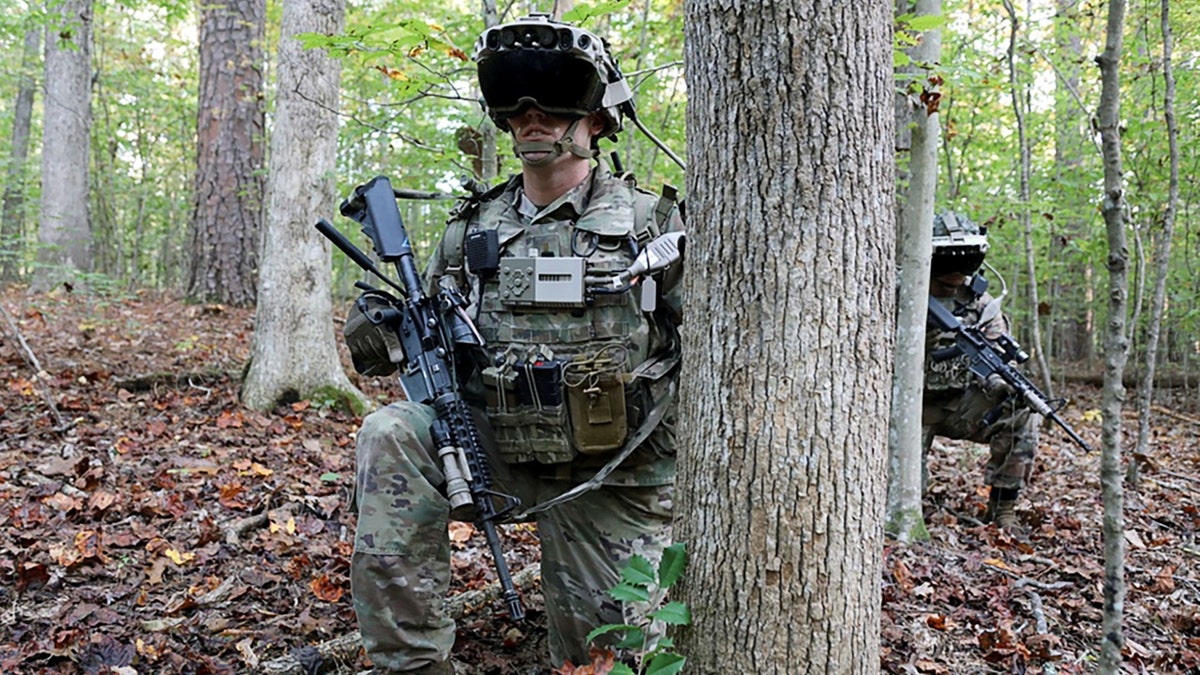Military changing confederate names at bases
Fox News chief national security correspondent Jennifer Griffin reports on the Pentagon Naming Commission's proposal to rename Army bases and remove Confederate statues and art on 'America Reports.'
Congress reportedly shot down the U.S. Army's request for $400 million to purchase additional Microsoft mixed reality headsets, instead realigning funding to develop new models that will address issues with the current devices.
The military is getting around a tenth of that sum to go toward improving the system after concerns were raised over field tests of the goggles, which are based on Microsoft’s HoloLens technology, Bloomberg reported.
Tests using the devices disclosed "mission-affecting physical impairments," including headaches, eye strain and nausea, the outlet reported, citing a summary of an exercise by the Pentagon's testing office.
The $400 million request was included in the $1.75 trillion government funding bill, according to Bloomberg.
TURN THIS GMAIL SECURITY FEATURE ON ASAP

Soldiers wear a prototype of the U.S. Army's Integrated Visual Augmentation System and wield a Squad immersive Virtual Trainer during a training environment test event at its third Soldier Touchpoint at Fort Pickett, Va., Oct. 21, 2020. (Courtney Bacon/U.S. Army via REUTERS)
In a Jan. 5 release, the Army said it had awarded a task order to Microsoft to develop the 1.2 variant of headsets, or Integrated Visual Augmentation Systems.
The task order, it said, would provide improvements based on completed test events.
"The IVAS will provide soldiers with a single device to fight, rehearse and train by integrating next-generation situational awareness tools," the Army said. "To date, the Army has conducted over 30 soldier test events and more than 100 technical subtests, with more than 1,000 soldiers contributing nearly 100,000 hours of IVAS user feedback. These tests validated the system’s continued progress while identifying areas for focused improvements."
The updated version will include a new form factor to address Human Systems Integration, including physiological impacts identified during testing, as well as software improvements for increased reliability and reduced power demands.

Soldiers wear a prototype of the U.S. Army's Integrated Visual Augmentation System during a Soldier Touchpoint 3 squad reconnaissance mission test training event at Fort Pickett, Va., Oct. 21, 2020. (Courtney Bacon/U.S. Army via REUTERS)
Delivery orders for IVAS 1.2 production systems will be placed after qualification and operational testing.
UFO SIGHTINGS SURGED OVER LAST TWO YEARS, US INTEL REPORT SAYS
According to Bloomberg, the Army awarded Microsoft around $125 million to develop the 1.2 variant, in addition to the tens of millions approved by Congress.

Microsoft Corporation booth signage is displayed at CES 2023 at the Las Vegas Convention Center Jan. 6, 2023, in Las Vegas. (David Becker/Getty Images)
Microsoft said in a post that the headsets are part of a broader effort to modernize U.S. military operations.
In 2018, Microsoft won a $480 million contract from the Army to develop a mixed reality headset to "help soldiers train, rehearse and fight," with IVAS being developed under an agreement known as an Other Transaction Authority.
CLICK HERE TO GET THE FOX NEWS APP
"The arrangement enabled IVAS to be developed in less than three years, much faster than a traditional project of its type," it said.






















